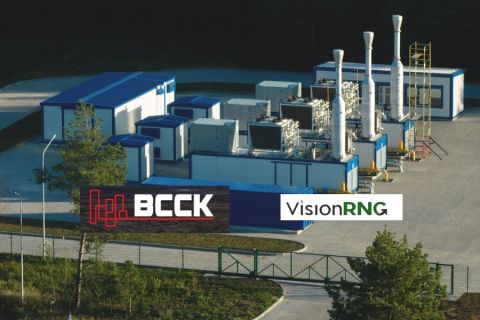A cabbie was asked during a recent press tour of the Brazilian offshore maritime industries why many of the more successful Formula One racecar drivers were from Brazil. The Rio de Janeiro-based driver responded that fearlessness is necessary to drive in a country that until only recently had lax enforcement of its traffic laws. “Now it is different,” he said. “The rules force us to go slow, but we still love to go fast.”
This is a sentiment shared by the oil and gas industry when one considers the speed at which the presalt layer found offshore in the Campos and Santos basins is being developed. Current production from 17 presalt wells located in the two basins is 300,000 b/d, according to operator Petrobras, the national oil company of Brazil. This record feat, according to the company, was achieved in only seven years after oil was first discovered in the presalt in 2006.
In addition, the last 14 months have been witness to the discovery by Petrobras of 53 prospects onshore and offshore. Of the 25 offshore discoveries, 15 were in the presalt. The company reports current proven reserves of 16.4 Bboe, a number that could double in a few years due to the presalt discoveries.
One recent example of the company’s exploration success is its Sagit?rio discovery. The company recently confirmed the presence of 31°API gravity oil in carbonate reservoirs 6,150 m (20,177 ft) below the surface. The exploration well, informally known as Sagit?rio, was the first to be drilled in the BM-S-50 block and is located 194 km (120 miles) off the coast of the state of S?o Paulo in 1,871 m (6,138 ft) of water.
A look at the “BP Statistical Review of World Energy June 2012” shows the country’s thirst for oil is significant, with approximately 2.6 MMb/d consumed in 2011. Production that year was approximately 2.1 MMb/d. Petrobras estimated the demand for oil products in the Brazilian market in 2020 to be 3.3 MMb/d.
To help close the gap, there are four refinery projects under way in the country, which will add an additional 1.5 MMb/d of processing capacity and will increase output to 2.2 MMb/d in 2016 and 3.4 MMb/d in 2020, according to a Petrobras-issued statement. To help keep the refineries flush with oil, the company has undertaken an ambitious project to develop its presalt as part of a strategic plan that calls for 5.7 MMboe/d of production in both Brazil and abroad by 2020.
Filling the production need
To reach the 2020 goal, Petrobras announced in its business and management plan its intent to invest US $24.3 billion in exploration and $106.9 billion on production development during the 2013 to 2017 period. In addition to these E&P investments, the company plans to invest a total of $16.3 billion on infrastructure improvements. A considerable bulk of the investment will go to cover the construction, deployment, and contracting of FPSO units, with 38 new production units planned to go operational by 2020.
In its latest report, the International Maritime Associates (IMA) noted that there are currently 77 production floaters on order worldwide, with FPSO vessels being in the highest demand at 44. Of the 77 floaters on order, 26 are being built for use offshore, with an additional 56 in the bid or design stages of the planning cycle. In water depths greater than 1,500 m (4,921 ft), the IMA noted that there are 65 projects worldwide. Of that number, 45% of those projects are for ultra-deep waters offshore Brazil.
In March Petrobras and its Block BM-S-11 partners BG E&P Brasil and Petrogal Brasil awarded a 20-year charter and operation of two FPSO vessels to the consortium QGOG/SBM Offshore for production development at Lula Alto and Lula Central in the Lula field located in the Santos basin presalt. According to SBM, the value of the dual-floater deal is $3.5 billion. The contract is the largest ever received by the company.
Each FPSO will be connected to 18 wells – 10 of which are production wells and eight of which are injector wells. Production is expected to begin in January 2016 at Lula Alto and in March 2016 at Lula Central, according to Petrobras. Each FPSO vessel will have a processing capacity of 150,000 b/d. Delivery of the vessels is expected in November 2015 for Lula Alto and January 2016 for Lula Central.
Currently, SBM Offshore is building topside modules for the FPSO vessel Cidade de Ilhabela in its Brasa Yard located in Niter?i outside of Rio de Janeiro. The vessel’s hull is being refurbished and converted at the Cheng Xi Guangzhou ship repair and conversion yard. According to SBM, the converted hull is scheduled to sail in summer 2013 to Brazil for module integration, hookup, and commissioning at the Brasa shipyard. The unit is scheduled to be installed offshore in the first half of 2014 on the north part of the Sapinho? presalt field in the Santos basin.
Production snapshot, future plans
Petrobras announced at the end of March that domestic oil output fell for a second consecutive month in February. Domestic crude oil output fell 2.3% to 1.92 MMb/d, down from 1.965 MMb/d in January. Output from overseas operations fell slightly to an average 149,100 b/d, down from 149,300 b/d in January.
Production was impacted by maintenance shutdowns at four offshore platforms in the basin during the month. The P-33 and P-37 platforms at the Marlim field were joined by the P-53 platform at the Marlim Leste field and the P-54 platform at the Roncador field in shutting down for refurbishing.
According to the company, the fall in production was partially offset by the startup of three new platforms. The FPSO vessel Cidade de S?o Paulo started pumping oil from the Sapinho? field in January. In February the FPSO vessel Cidade de Itaja? initiated production from the southern post-salt area of the Santos basin, and operations started on a long-term well at the Sapinho? Norte subsalt field.
Five production units planned for installation by year-end 2013 will bring an additional 760,000 b/d to the market once all are fully operational. In May the FPSO vessel Cidade de Paraty will go into production in the northeast area of the Lula field in the Santos basin presalt. The unit has the capacity to process 120,000 b/d.
First oil for the FPSO vessel P-63 is set to flow in July and in December for the TLWP P-61 located in the Papa Terra field in the Campos basin. Petrobras reported that the project calls for the drilling, completion, and interconnection of 30 wells in the field. Production capacity is projected to be 140,000 b/d. The Roncador Project Module III will see the drilling, completion, and interconnection of 17 wells to SS P-55, with first oil set for September. The company will finish the year out with the FPSO P-58 going online in the Parque das Baleias field in November. Production capacity for the P-55 and P-58 is projected to be 180,000 b/d.
Recommended Reading
Report: Crescent Midstream Exploring $1.3B Sale
2024-04-23 - Sources say another company is considering $1.3B acquisition for Crescent Midstream’s facilities and pipelines focused on Louisiana and the Gulf of Mexico.
Equitrans Midstream Announces Quarterly Dividends
2024-04-23 - Equitrans' dividends will be paid on May 15 to all applicable ETRN shareholders of record at the close of business on May 7.
BCCK, Vision RNG Enter Clean Energy Partnership
2024-04-23 - BCCK will deliver two of its NiTech Single Tower Nitrogen Rejection Units (NRU) and amine systems to Vision RNG’s landfill gas processing sites in Seneca and Perry counties, Ohio.
EIG’s MidOcean Closes Purchase of 20% Stake in Peru LNG
2024-04-23 - MidOcean Energy’s deal for SK Earthon’s Peru LNG follows a March deal to purchase Tokyo Gas’ LNG interests in Australia.
Clean Energy Begins Operations at South Dakota RNG Facility
2024-04-23 - Clean Energy Fuels’ $26 million South Dakota RNG facility will supply fuel to commercial users such as UPS and Amazon.





